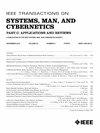Aggregating evidence in pavement management decision-making using belief functions and qualitative Markov tree
IEEE Transactions on Systems Man and Cybernetics Part C-Applications and Re
Pub Date : 2002-08-01
DOI:10.1109/TSMCC.2002.804443
引用次数: 11
Abstract
This paper applies the combined use of qualitative Markov trees and belief functions (otherwise known as Dempster-Shafer theory of evidence), to pavement management decision-making. The basic concepts of the belief function approach-basic probability assignments, belief functions and plausibility functions-are discussed. This paper also discusses the construction of the qualitative Markov tree (join tree). The combined use of the two methods provides a framework for dealing with uncertainty, incomplete data, and imprecise information in the presence of multiple evidences on decision variables. The approach is very appropriate, since it presents more improved methodology and analysis than traditional probability methods applied in pavement management decision-making. Traditional probability theory as a mathematical framework for conceptualizing uncertainty, incomplete data and imprecise information has several shortcomings that have been augmented by several alternative theories. An example is presented to illustrate the construction of qualitative Markov trees, from the evidential network and the solution algorithm. The purpose of the paper is to demonstrate how the evidential network and the qualitative Markov tree can be constructed, and how the propagation of m-values can be handled in the network.基于信念函数和定性马尔可夫树的路面管理决策证据聚合
本文将定性马尔可夫树和信念函数(也称为Dempster-Shafer证据理论)的组合使用应用于路面管理决策。讨论了信念函数方法的基本概念——基本概率赋值、信念函数和似然函数。本文还讨论了定性马尔可夫树(连接树)的构造。这两种方法的结合使用提供了一个框架,用于处理不确定性,不完整的数据,以及存在多个决策变量证据的不精确信息。该方法是非常合适的,因为它比传统的概率方法在路面管理决策中提供了更多改进的方法和分析。传统的概率论作为一种概念化不确定性、不完整数据和不精确信息的数学框架,有一些缺点,这些缺点被一些替代理论所增强。从证据网络和求解算法两个方面给出了定性马尔可夫树的构造实例。本文的目的是演示如何构建证据网络和定性马尔可夫树,以及如何在网络中处理m值的传播。
本文章由计算机程序翻译,如有差异,请以英文原文为准。
求助全文
约1分钟内获得全文
求助全文
来源期刊
自引率
0.00%
发文量
1
审稿时长
3 months

 求助内容:
求助内容: 应助结果提醒方式:
应助结果提醒方式:


